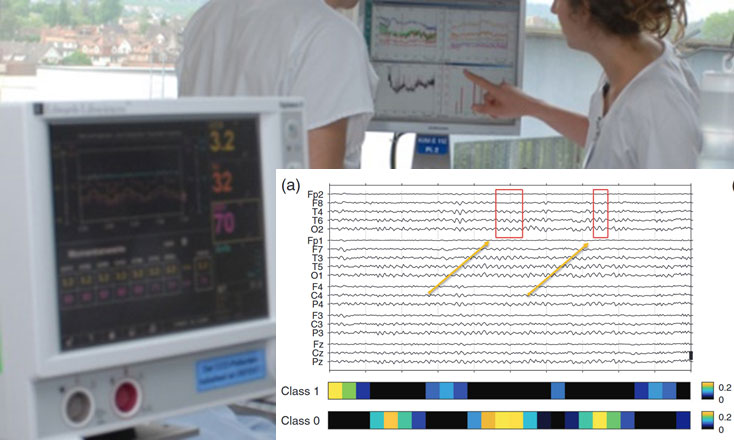AI-based prognosis in intensive care: decision-relevant patterns identified in EEG of coma patients
A reliable prognosis for coma patients in the intensive care unit is crucial. Improved transparency will boost the use of Artificial Intelligence (AI) to support end-of-life decisions. For the first time, a research team has succeeded in identifying specific patterns in Electro-Encephalogram (EEG) analyses that the deep-learning network uses for making prognosis decisions. This is an important step towards decoding the "black box" of deep-learning processes and thus towards AI transparency.
The majority of deaths among coma patients after cardiac arrest in intensive care units occurs after life-support systems are discontinued. The EEG is one of the instruments used for prognosis. Several studies indicate that AI can be used to make reliable prognoses for the purpose of supporting the doctor’s decision-making process. Widespread reluctance towards AI prognoses can be attributed to, among other things, the fact that until now deep-learning networks have not provided any information on which the decisions were based, and it was therefore not clear which facts and circumstances led to a particular prognosis.
Breakthrough in the interpretation of EEG
A multidisciplinary research team from the Sleep-Wake-Epilepsy Center (SWEZ) of the Department of Neurology at Inselspital (F. Zubler), the Computer Vision Group of the Institute of Computer Science at the University of Bern (S. Jonas, S. Jenni and P. Favaro), as well as the Departments of Neurology (A. Rossetti) and Emergency Medicine (M. Oddo) at the Lausanne University Hospital (CHUV) has now succeeded in identifying important patterns in the EEG of coma patients that are relevant for making decisions. The team based its studies on standard clinical EEG recordings of 267 adults from the CHUV. A convolutional neural network (CNN) analysed the EEG in the early phase of post-cardiac arrest care. A special visualization method, the so-called Grad-CAM algorithm, was used to identify those areas of the EEG that CNN used for its positive or negative prognoses.
Experts and AI use the same patterns
The leader of the study, Dr. Dr. med. F. Zubler explains: "AI-supported decisions will become increasingly important for medical practice in the intensive care unit in the future. If we render this support transparent and traceable, we will also be able to have a more solid basis for making ethical decisions." A key result of the study was that the chosen visualization method was able to decode part of the deep-learning process and thereby identify certain EEG patterns on which the machine based its decisions. Interestingly, AI often uses the same patterns that neurologists use clinically when making prognosis decisions.
AI is becoming increasingly important for decision-making in the intensive care unit
The study shows that AI will continue to gain in importance. Thanks to the new approach, more transparency can now be brought into deep-learning applications by basing predictive values on a comprehensible explanation. In ethical terms, this is also of utmost importance in the decision- making process.
Source: Insel Gruppe
2019/09/18


